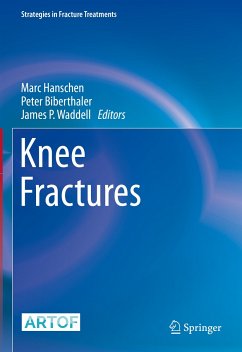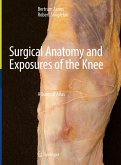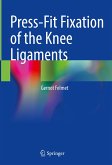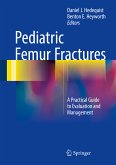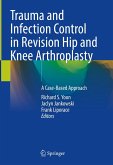Knee Fractures (eBook, PDF)
Redaktion: Hanschen, Marc; Waddell, James P.; Biberthaler, Peter


Alle Infos zum eBook verschenken

Knee Fractures (eBook, PDF)
Redaktion: Hanschen, Marc; Waddell, James P.; Biberthaler, Peter
- Format: PDF
- Merkliste
- Auf die Merkliste
- Bewerten Bewerten
- Teilen
- Produkt teilen
- Produkterinnerung
- Produkterinnerung

Hier können Sie sich einloggen

Bitte loggen Sie sich zunächst in Ihr Kundenkonto ein oder registrieren Sie sich bei bücher.de, um das eBook-Abo tolino select nutzen zu können.
This book provides a complete overview of the various types of fractures around the knee. Each chapter addresses anatomical key features, surgical procedures, postoperative regimes and complication strategies. International knee experts discuss how to improve nailing techniques as well as pearls and pitfalls for each type of knee fracture. Current clinical outcomes are included throughout and the authors recommend their preferred therapeutic approach and salvage measures if required.
Knee Fractures is an essential, go-to resource for orthopaedic surgeons dealing with the total spectrum of simple and complex knee fractures in daily clinical practice.…mehr
- Geräte: PC
- ohne Kopierschutz
- eBook Hilfe
- Größe: 18.03MB
![Surgical Anatomy and Exposures of the Knee (eBook, PDF) Surgical Anatomy and Exposures of the Knee (eBook, PDF)]() Surgical Anatomy and Exposures of the Knee (eBook, PDF)242,95 €
Surgical Anatomy and Exposures of the Knee (eBook, PDF)242,95 €![Periprosthetic Fractures of the Hip and Knee (eBook, PDF) Periprosthetic Fractures of the Hip and Knee (eBook, PDF)]() Periprosthetic Fractures of the Hip and Knee (eBook, PDF)97,95 €
Periprosthetic Fractures of the Hip and Knee (eBook, PDF)97,95 €![Press-Fit Fixation of the Knee Ligaments (eBook, PDF) Press-Fit Fixation of the Knee Ligaments (eBook, PDF)]() Gernot FelmetPress-Fit Fixation of the Knee Ligaments (eBook, PDF)65,95 €
Gernot FelmetPress-Fit Fixation of the Knee Ligaments (eBook, PDF)65,95 €![Pediatric Femur Fractures (eBook, PDF) Pediatric Femur Fractures (eBook, PDF)]() Pediatric Femur Fractures (eBook, PDF)73,95 €
Pediatric Femur Fractures (eBook, PDF)73,95 €![Trauma and Infection Control in Revision Hip and Knee Arthroplasty (eBook, PDF) Trauma and Infection Control in Revision Hip and Knee Arthroplasty (eBook, PDF)]() Trauma and Infection Control in Revision Hip and Knee Arthroplasty (eBook, PDF)121,95 €
Trauma and Infection Control in Revision Hip and Knee Arthroplasty (eBook, PDF)121,95 €![The Artificial Knee (eBook, PDF) The Artificial Knee (eBook, PDF)]() Peter S. WalkerThe Artificial Knee (eBook, PDF)97,95 €
Peter S. WalkerThe Artificial Knee (eBook, PDF)97,95 €![The Basic Principles of External Skeletal Fixation Using the Ilizarov Device (eBook, PDF) The Basic Principles of External Skeletal Fixation Using the Ilizarov Device (eBook, PDF)]() Leonid SolominThe Basic Principles of External Skeletal Fixation Using the Ilizarov Device (eBook, PDF)129,95 €
Leonid SolominThe Basic Principles of External Skeletal Fixation Using the Ilizarov Device (eBook, PDF)129,95 €-
-
-
Knee Fractures is an essential, go-to resource for orthopaedic surgeons dealing with the total spectrum of simple and complex knee fractures in daily clinical practice.
Dieser Download kann aus rechtlichen Gründen nur mit Rechnungsadresse in A, B, BG, CY, CZ, D, DK, EW, E, FIN, F, GR, HR, H, IRL, I, LT, L, LR, M, NL, PL, P, R, S, SLO, SK ausgeliefert werden.
- Produktdetails
- Verlag: Springer International Publishing
- Seitenzahl: 297
- Erscheinungstermin: 30. November 2021
- Englisch
- ISBN-13: 9783030817763
- Artikelnr.: 63065429
- Verlag: Springer International Publishing
- Seitenzahl: 297
- Erscheinungstermin: 30. November 2021
- Englisch
- ISBN-13: 9783030817763
- Artikelnr.: 63065429
- Herstellerkennzeichnung Die Herstellerinformationen sind derzeit nicht verfügbar.
